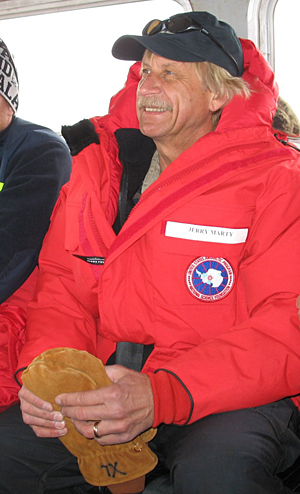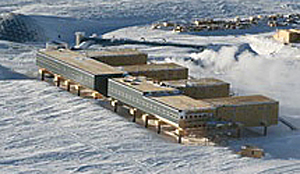
- Rozovsky wins prestigious NSF Early Career Award
- UD students meet alumni, experience 'closing bell' at NYSE
- Newark Police seek assistance in identifying suspects in robbery
- Rivlin says bipartisan budget action, stronger budget rules key to reversing debt
- Stink bugs shouldn't pose problem until late summer
- Gao to honor Placido Domingo in Washington performance
- Adopt-A-Highway project keeps Lewes road clean
- WVUD's Radiothon fundraiser runs April 1-10
- W.D. Snodgrass Symposium to honor Pulitzer winner
- New guide helps cancer patients manage symptoms
- UD in the News, March 25, 2011
- For the Record, March 25, 2011
- Public opinion expert discusses world views of U.S. in Global Agenda series
- Congressional delegation, dean laud Center for Community Research and Service program
- Center for Political Communication sets symposium on politics, entertainment
- Students work to raise funds, awareness of domestic violence
- Equestrian team wins regional championship in Western riding
- Markell, Harker stress importance of agriculture to Delaware's economy
- Carol A. Ammon MBA Case Competition winners announced
- Prof presents blood-clotting studies at Gordon Research Conference
- Sexual Assault Awareness Month events, programs announced
- Stay connected with Sea Grant, CEOE e-newsletter
- A message to UD regarding the tragedy in Japan
- More News >>
- March 31-May 14: REP stages Neil Simon's 'The Good Doctor'
- April 2: Newark plans annual 'wine and dine'
- April 5: Expert perspective on U.S. health care
- April 5: Comedian Ace Guillen to visit Scrounge
- April 6, May 4: School of Nursing sponsors research lecture series
- April 6-May 4: Confucius Institute presents Chinese Film Series on Wednesdays
- April 6: IPCC's Pachauri to discuss sustainable development in DENIN Dialogue Series
- April 7: 'WVUDstock' radiothon concert announced
- April 8: English Language Institute presents 'Arts in Translation'
- April 9: Green and Healthy Living Expo planned at The Bob
- April 9: Center for Political Communication to host Onion editor
- April 10: Alumni Easter Egg-stravaganza planned
- April 11: CDS session to focus on visual assistive technologies
- April 12: T.J. Stiles to speak at UDLA annual dinner
- April 15, 16: Annual UD push lawnmower tune-up scheduled
- April 15, 16: Master Players series presents iMusic 4, China Magpie
- April 15, 16: Delaware Symphony, UD chorus to perform Mahler work
- April 18: Former NFL Coach Bill Cowher featured in UD Speaks
- April 21-24: Sesame Street Live brings Elmo and friends to The Bob
- April 30: Save the date for Ag Day 2011 at UD
- April 30: Symposium to consider 'Frontiers at the Chemistry-Biology Interface'
- April 30-May 1: Relay for Life set at Delaware Field House
- May 4: Delaware Membrane Protein Symposium announced
- May 5: Northwestern University's Leon Keer to deliver Kerr lecture
- May 7: Women's volleyball team to host second annual Spring Fling
- Through May 3: SPPA announces speakers for 10th annual lecture series
- Through May 4: Global Agenda sees U.S. through others' eyes; World Bank president to speak
- Through May 4: 'Research on Race, Ethnicity, Culture' topic of series
- Through May 9: Black American Studies announces lecture series
- Through May 11: 'Challenges in Jewish Culture' lecture series announced
- Through May 11: Area Studies research featured in speaker series
- Through June 5: 'Andy Warhol: Behind the Camera' on view in Old College Gallery
- Through July 15: 'Bodyscapes' on view at Mechanical Hall Gallery
- More What's Happening >>
- UD calendar >>
- Middle States evaluation team on campus April 5
- Phipps named HR Liaison of the Quarter
- Senior wins iPad for participating in assessment study
- April 19: Procurement Services schedules information sessions
- UD Bookstore announces spring break hours
- HealthyU Wellness Program encourages employees to 'Step into Spring'
- April 8-29: Faculty roundtable series considers student engagement
- GRE is changing; learn more at April 15 info session
- April 30: UD Evening with Blue Rocks set for employees
- Morris Library to be open 24/7 during final exams
- More Campus FYI >>
2:56 p.m., Feb. 3, 2009----The latest lectures in the University of Delaware's William S. Carlson International Polar Year Events will take you on a journey to the ends of the Earth, from the new U.S. South Pole Station -- an engineering marvel -- to the Arctic, where scientists are observing changes in marine biological communities as global temperatures warm.
On Wednesday, Feb. 11, at 5 p.m. in 123 Memorial Hall, Jerry Marty, facilities construction and maintenance manager for the National Science Foundation's Office of Polar Programs, Division of Antarctic Sciences, will present “Building for Science at the South Pole.”
Marty has spent the past seven years as the on-site construction manager for the Amundsen-Scott South Pole Station, which opened in January 2008. He will talk about what it took to build this “home-away-from-home” for scientists working in the heart of Antarctica.
The new research station sits at the Earth's axis atop a constantly shifting continental ice sheet nearly two miles thick. Among its most novel features, hydraulic jack columns allow the building to be raised in 10-inch increments to keep it out of drifting snow.
Marty will be introduced by Thomas Gaisser, UD's Martin A. Pomerantz Chair of Physics and Astronomy. A veteran Antarctic researcher, Gaisser is leading a team from the University of Delaware's Bartol Research Institute in developing “Ice Top,” the surface array of detectors for the world's largest neutrino telescope, called “Ice Cube,” which is being built deep within the polar ice sheet. The team has shared their experiences with the public in a popular blog series.
The lecture is free and open to the public and will be followed by a catered reception. Seating is limited. Register online at this Web site.
The lecture will be Webcast live at this site and be made available as a podcast after the event at this site.
The lecture also will be simulcast into the University of Delaware's virtual world in Second Life. The lecture will be presented at this location in UD Second Life. Note that you must have an avatar in Second Life to visit using this link.
On Thursday, Feb. 12, at 4 p.m., Jacqueline Grebmeier, research professor and biological oceanographer at the University of Maryland Center for Environmental Science's Chesapeake Biological Laboratory, will present “Implications of Arctic Change: Marine Biology and Beyond.”
The seminar, which is sponsored by the College of Marine and Earth Studies and the Department of Biological Sciences, will be held at UD's Hugh R. Sharp Campus in Cannon Laboratory, Room 202, and broadcast via ITV to the Newark campus in Robinson Hall, Room 206.
Grebmeier will discuss recent international research cruises in the northern Bering and Chukchi seas between Alaska and Russia. These studies add critical information to research in the region and help scientists understand the changes being observed in animal populations there.
“This presentation will discuss past and current data collected in the western Arctic that suggest a potential reorganization of this extremely productive marine ecosystem is underway,” Grebmeier said.
Grebmeier was lead author in a study recently highlighted in the journal Science that provides some of the first direct evidence for biological community responses to warming and oceanographic shifts in the Bering Sea ecosystem.
Grebmeier's other research includes studies of benthic carbon cycling, benthic faunal population structure, and polar ecosystem health. She has published more than 75 peer-reviewed scientific papers.
She also is the U.S. delegate to the International Arctic Science Committee (IASC), a member of the U.S. Polar Research Board of the National Academies, and served formerly as a member of the U.S. Arctic Research Commission following appointment by President Bill Clinton. She has contributed to coordinated international and national science planning efforts, including service on the steering committee for U.S. efforts in the ongoing International Polar Year.
The William S. Carlson International Polar Year Events celebrate UD's president from 1946-1950, who also was an Arctic explorer, and UD's significant polar research in the world's fourth International Polar Year. The global scientific and education program began in March 2007 and concludes in March 2009.
Article by Tracey Bryant and Elizabeth Boyle



